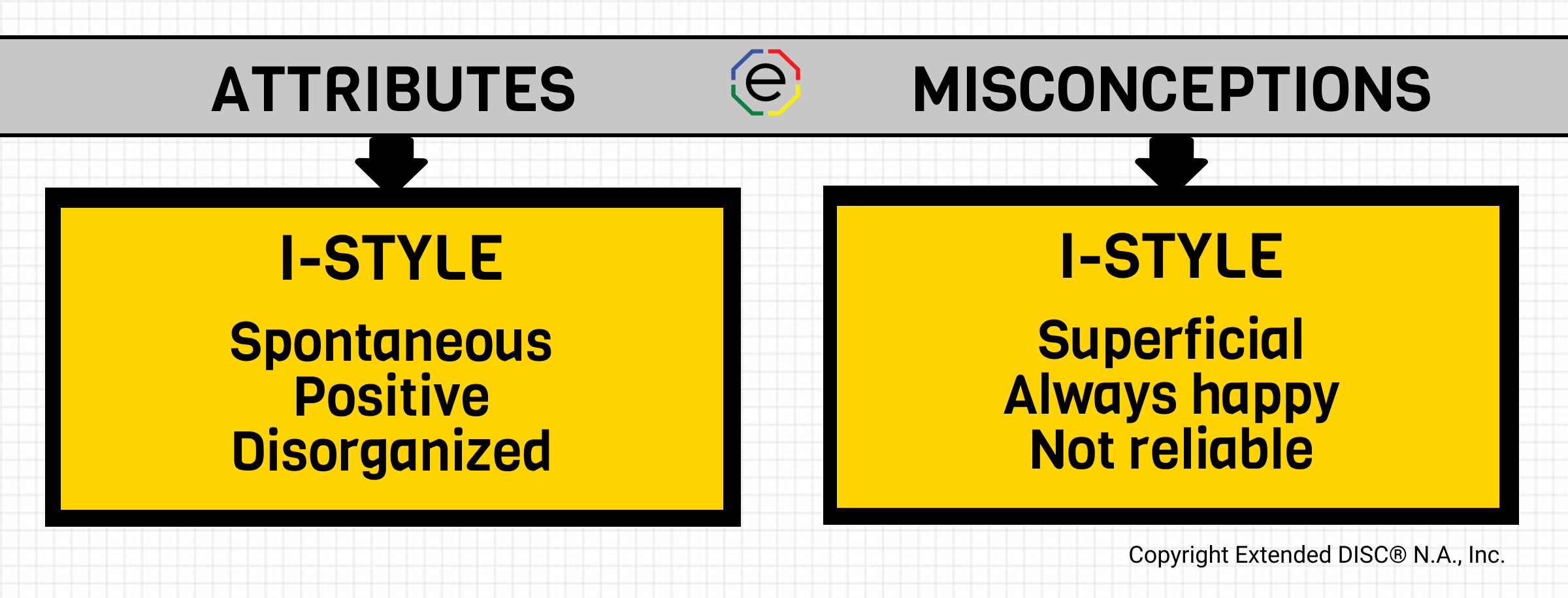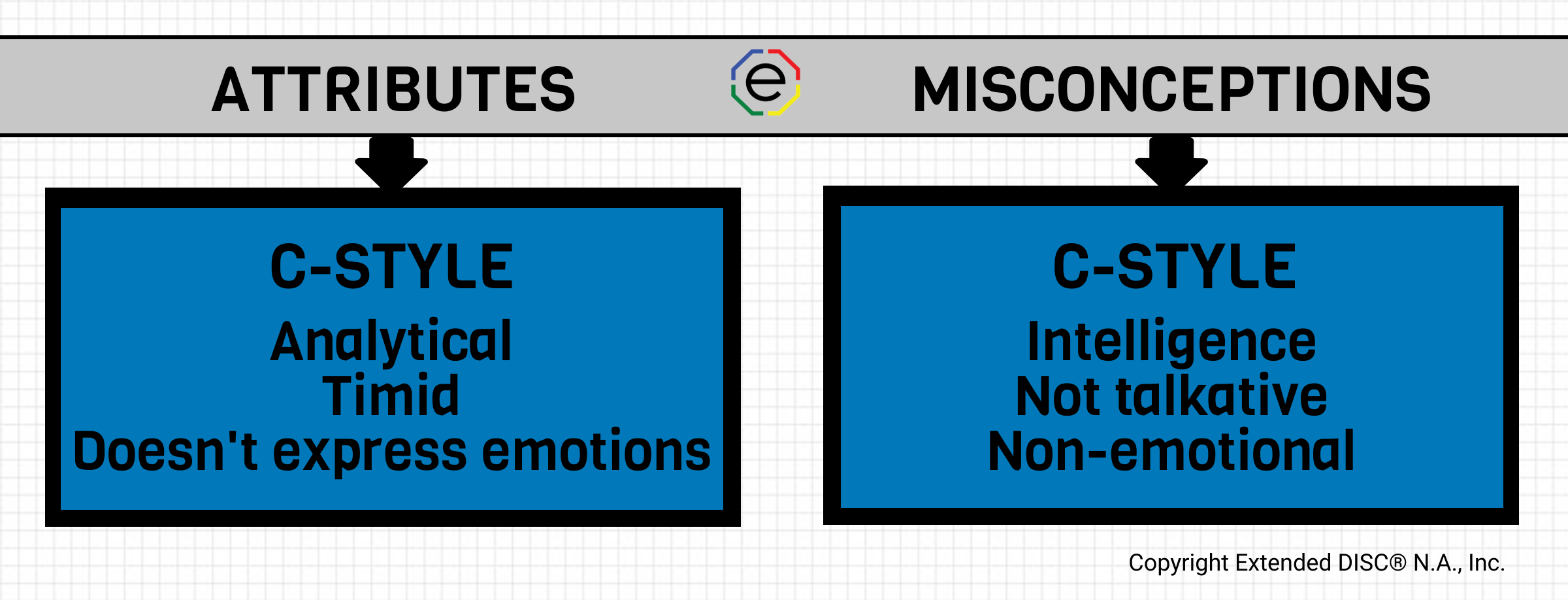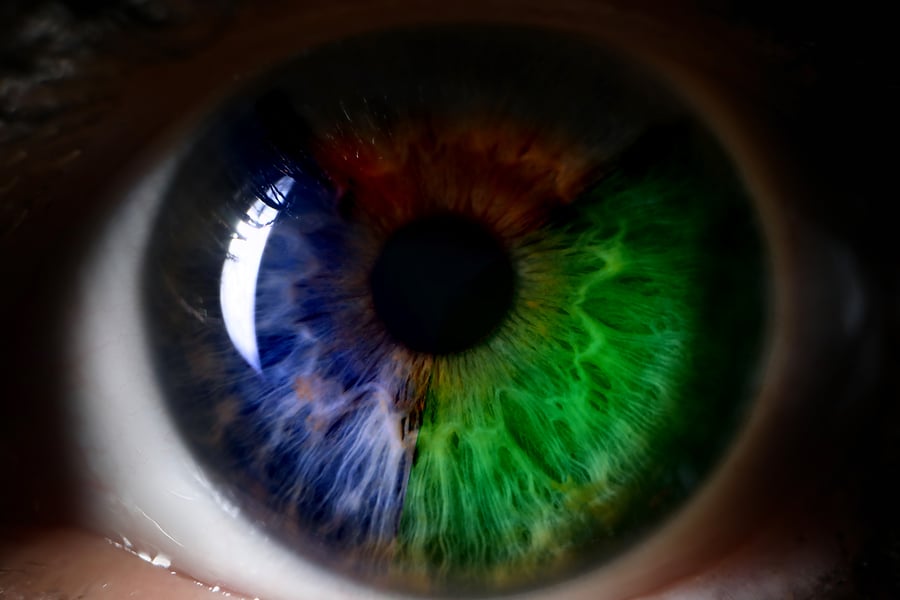Preconceived views about others enable us to make decisions about others quicker, but they can also end up clouding our judgment.
When our misguided views transition into strong biases, it can end up inhibiting our ability to interact well with others. These limiting beliefs end up clouding our judgment. We begin to view others in an overly positive or negative way. Our own behaviors take precedent because we have a personal tie to our own behavioral style. However, it can end up creating these biases towards others that may not be accurate and end up impeding our success.
DISC helps us understand how we do things
 First off, not all DISC tools measure the same thing. Extended DISC assessments measure our hardwired natural behaviors. Our natural style helps to predict how we tend or prefer to do things which gives us a more accurate starting point for improving interactions. Extended DISC focuses primarily on behaviors because they can be modified. However, factors such as our attitudes, values, knowledge, and skills impact how we see the world and others.
First off, not all DISC tools measure the same thing. Extended DISC assessments measure our hardwired natural behaviors. Our natural style helps to predict how we tend or prefer to do things which gives us a more accurate starting point for improving interactions. Extended DISC focuses primarily on behaviors because they can be modified. However, factors such as our attitudes, values, knowledge, and skills impact how we see the world and others.
One of the strengths of the DISC model is it carries no value judgment. We are not good, bad, better, or worse; we are simply different. DISC doesn’t limit you in excelling in any aspect of life nor can it predict your success. In fact, everyone has all four DISC styles, the Assessment simply identifies the styles which are more comfortable, or natural, and the styles which take more energy, or not natural. For example, if you assume a person has to be a certain style to be a manager, then it’s based on your value judgment and not DISC.
Our common misconceptions about D-styles

Task-focused D-styles are often thought of as competitive, but we may assume it’s only about winning. Their results may sometimes align more with their individual goals, over the organizational ones. They have a strong desire to get things done.
We think of D-styles as being decisive, but it does not guarantee the decisions they make will be correct or best ones. It simply shows that D-styles are comfortable making decisions quickly, especially if there is a fast reward. However, this can lead to poor decisions when they do not factor alternatives. In a nod to the D-style, they tend not to dwell on wrong decisions since they’re natural risk-takers.
We sometimes assume, because D-styles prefer to be ‘large and in charge,’ they’d make the best leaders. However, wanting ‘to be in charge’ does not guarantee they have the skills, knowledge, and attitudes to be the best leader.
Our common misconceptions about the I-style
 I-styles are more naturally spontaneous. They are more of an emotional style that can make impulsive decisions. However, it doesn’t mean they are superficial. Their energy tends to be easily observed and their enthusiasm may seem less genuine to others who are not as people-oriented or energetic.
I-styles are more naturally spontaneous. They are more of an emotional style that can make impulsive decisions. However, it doesn’t mean they are superficial. Their energy tends to be easily observed and their enthusiasm may seem less genuine to others who are not as people-oriented or energetic.
While many of us are ‘glass half empty; and some of us are ‘glass half full,’ the I-style is the “glass overflowing!’ However, their tendency to focus on the positives doesn’t mean they are always happy. I-styles tend to exhibit strong emotional reactions; whether things are wonderful or when they are going horribly. They may try to hide negative emotions because they want people to view them positively.
Our common misconceptions about the S-style
 We tend to see S-styles as laid-back and relaxed, but that doesn’t mean they are not competitive. They tend to keep their emotions below the surface, but they are still an emotional style. They are often seen as the ‘team players’ of the styles and will certainly compete well if it benefits their team.
We tend to see S-styles as laid-back and relaxed, but that doesn’t mean they are not competitive. They tend to keep their emotions below the surface, but they are still an emotional style. They are often seen as the ‘team players’ of the styles and will certainly compete well if it benefits their team.
S-styles are admired for their patience, but sometimes we assume they are a pushover because they are less likely to say ‘no’ to us. However, they can be extremely stubborn. They have what can be seen as having an emotional bank account; the largest of the four DISC styles. We all draw from their account, and while it may seem limitless, at some point it will fully deplete. When their emotional bank account is empty, they tend to shut down and it is hard to open that account back up. You may not even be aware you’ve reached your limit with them until it’s too late!
S-styles appear to take longer to make decisions and are often uncomfortable if forced to make a decision quickly and without supporting information. We think their indecisiveness means they cannot decide, but that’s not necessarily true. If we were to view the world from the eyes of the S-style, they are often considering how their decision would impact the people around them. In essence, they want decision-making to be a consensus and relevant to everyone.
Our Common Misconceptions about the C-style

Of all the styles, C-styles come to mind when we think of being analytical because they are more reserved and focused on details and data. One’s intelligence does not directly correlate to being analytical.
We may describe C-styles as timid because they prefer not to engage in heated debates and are less likely to speak up, preferring to listen. However, it doesn’t mean they won’t talk. In fact, they can become extremely chatty if the discussion is about a topic they are interested in or have knowledge about.
C-styles are often seen as cooler and more reserved because their emotions and energies tend to remain below the surface. While they may not express emotions readily, it does not mean they are non-emotional. They feel emotions like anyone else, but they may not show them the same as other styles.
Key to minimizing misconceptions
 It’s often easier to fall back on our preconceived assumptions about other styles. We can react more quickly and it takes less energy, but it can also get us into trouble. If unchecked, our assumptions can become misconceptions and impair our ability to interact successfully with others.
It’s often easier to fall back on our preconceived assumptions about other styles. We can react more quickly and it takes less energy, but it can also get us into trouble. If unchecked, our assumptions can become misconceptions and impair our ability to interact successfully with others.
Self-awareness provides us with an opportunity to understand how our styles impact our views of others; how we tend to judge and assign traits to them. We need to continually assess and validate our present beliefs in order to prevent them from turning into misconceptions. We can actively minimize misconceptions by maintaining awareness of our behavioral style, actively identifying the style of others, and making the most effective adjustments to have a successful interaction.
So, the next time you’re about to make a judgment about someone, stop and ask yourself, ‘is it really true?’
